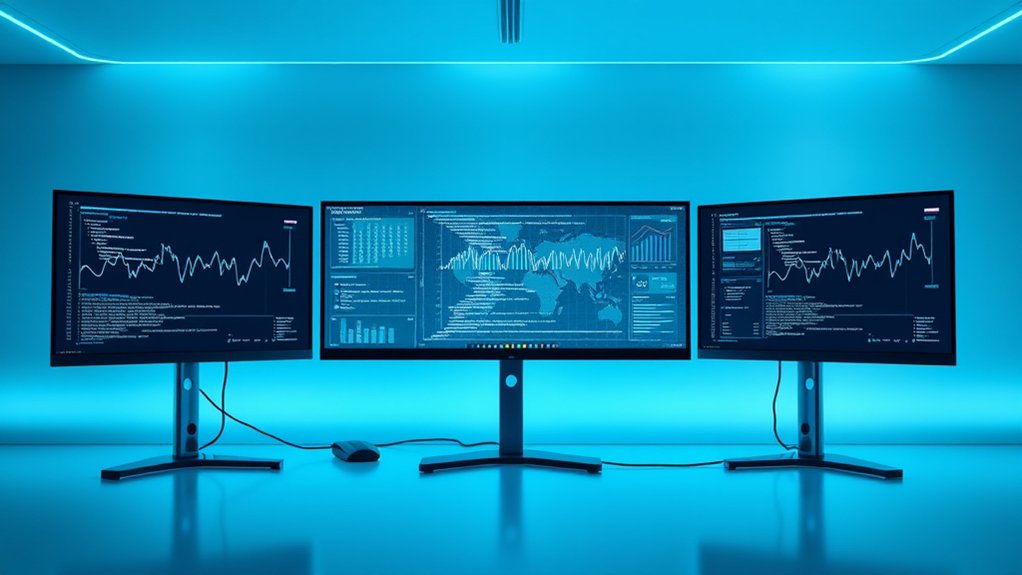A tabletop exercise in cybersecurity is a strategic discussion that allows organizations to simulate responses to cyber incidents. Key stakeholders, including IT, legal, and management teams, collaborate in a low-stress environment to evaluate incident response plans. This method highlights potential gaps in preparedness and enriches team communication. By providing realistic scenarios, these exercises improve decision-making and clarify roles during crises. Organizations employ tabletop exercises regularly to strengthen their incident response framework and adapt to evolving threats, cultivating a culture of continuous improvement.

In today’s rapidly evolving digital environment, tabletop exercises in cybersecurity have emerged as an essential tool for organizations aiming to strengthen their incident response strategies. A tabletop exercise typically involves key stakeholders, such as IT, legal, and management teams, discussing simulated cyber incidents to assess the organization’s preparedness and identify potential gaps in its response plans.
These discussions occur in a low-stress environment and do not impact actual systems, allowing participants to engage without the pressure of a live incident. The primary objective of a tabletop exercise is to evaluate and improve response plans by testing their effectiveness under simulated conditions. Additionally, these exercises focus on decision-making by allowing teams to respond to hypothetical scenarios collaboratively, enhancing overall preparedness.
It improves decision-making by providing a platform to practice important decisions in high-pressure scenarios. Furthermore, these exercises promote team collaboration by clarifying roles and responsibilities among participants. By raising awareness of various cyber threats, organizations can better prepare for different attack vectors, including ransomware and phishing campaigns.
Participants in these exercises consist of a diverse range of departments, including IT and cybersecurity teams tasked with threat identification, management executives responsible for strategic decisions, and legal teams ensuring compliance with regulatory standards. Communication teams play a significant role in managing internal and external messages during a potential crisis. This cross-functional involvement is essential for improving communication and coordination throughout the organization. Conducting tabletop exercises offers numerous benefits, such as improved incident response procedures and better communication channels.
They help facilitate risk identification, enabling organizations to uncover vulnerabilities within existing systems. By developing realistic scenarios and assembling experienced facilitators, organizations can evaluate their readiness effectively and derive actionable insights. Regularly conducting tabletop exercises not only helps strengthen incident response capabilities but also ensures compliance with regulatory requirements.
Ultimately, tabletop exercises serve as an integral component of an organization’s ongoing cybersecurity strategy. They allow organizations to pinpoint gaps in planning, develop targeted action items, and improve collaborative efforts across all involved departments, thereby nurturing a strong incident response framework that can withstand the complexities of evolving cyber threats.
Frequently Asked Questions
Who Should Participate in a Tabletop Exercise?
In a tabletop exercise, participation should extend to diverse representatives across various departments.
Key roles include IT and cybersecurity teams for threat management, executives for strategic risk decisions, and legal professionals for compliance guidance.
Moreover, communication specialists handle messaging, whereas HR and finance personnel address internal implications.
Involving varied perspectives boosts the exercise’s effectiveness, encouraging collaboration and ensuring thorough responses to potential cyber incidents, ultimately nurturing organizational preparedness and resilience.
How Often Should Tabletop Exercises Be Conducted?
Tabletop exercises should be conducted quarterly to guarantee continuous evaluation of incident response strategies.
This frequency allows organizations to adapt to evolving threats, whereas some regulations mandate annual assessments.
Following incidents, additional exercises may be necessary to gauge response effectiveness.
Experts highlight regular engagement to identify weaknesses and improve team communication.
In spite of potential challenges, such as scheduling conflicts and resource limitations, maintaining a structured exercise schedule is essential for strong cybersecurity preparedness.
What Are Common Scenarios Used in Tabletop Exercises?
Common scenarios used in tabletop exercises encompass ransomware attacks, data theft, insider threats, business email compromises, and supply chain breaches.
Ransomware scenarios simulate employee data inaccessibility as a result of ransom demands. Data theft exercises examine reactions to data leaks. Insider threat simulations reveal vulnerabilities via disgruntled employees accessing sensitive data.
Business email compromises assess the risk of spoofed communications. Each scenario is intentionally developed to reflect realistic threats, enhancing organizational preparedness through practical experience and strategic discussions.
Can Tabletop Exercises Be Conducted Virtually?
Tabletop exercises can certainly be conducted in virtual settings, ensuring participation from diverse teams, including IT, legal, and public relations departments.
These exercises improve communication and collaboration, simulating realistic cyber threat scenarios in a controlled environment. Experts advocate for clear objectives and realistic scenarios to maximize effectiveness.
Reports following these exercises pinpoint areas for improvement, nurturing continuous evaluation and strategic planning for cybersecurity readiness.
Consequently, virtual formats prove cost-effective as they maintain vital training outcomes.
What Tools Are Needed for a Tabletop Exercise?
To effectively conduct a tabletop exercise, several tools are vital.
Virtual meeting platforms, such as Zoom, facilitate remote participation, whereas whiteboards or digital boards aid in brainstorming.
Detailed scenario guides guarantee clarity on the exercise’s parameters.
Furthermore, visual aids, including presentations and handouts, improve understanding of the scenario.
Post-exercise evaluation templates are important for evaluating the effectiveness of the exercise, helping organizations identify gaps and refine incident response strategies based on feedback.









